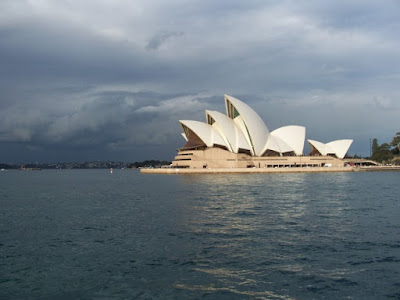.
A funny thing happened on my way to the Machane Yehuda shuk this morning. Instead of transferring to my usual second bus I decided to
walk in the general direction of the shuk (market).
And all manner of surprises were around, waiting to be discovered!
Three hours later I realized it was time to catch my infrequent bus back to my village. I came home with tons of photos but zero fruits and vegetables.
But look at this! Jerusalem's Gan Sacher park has a
bonsho, a Japanese Zen Buddhist temple bell!
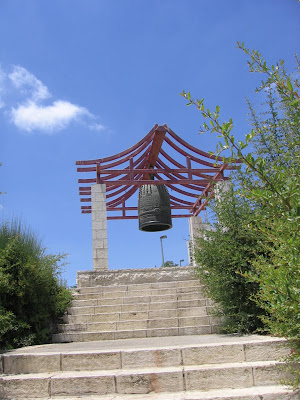
There are 108 little
chubchiks around the top. And in Japan, Hawaii, etc. the bonsho is struck 108 times on New Year's Eve to eradicate the 108 "Buddhist sins," the blind desires one has created throughout the year. (Or so I learn now via the Internet.)
 The plaque under the bell reads:
The plaque under the bell reads:
"The bonsho has been placed here as a symbol of lasting peace over the City of Jerusalem. The concept of the bell was welcomed by the late Prime Minister of Israel Mr. Yizhak Rabin. The project was made possible by the donations of people whose names are listed in the scroll beneath the Bonsho, represented by Mr. Pikihiro Madarame, presented to the City of Jerusalem and accepted by the Mayor M.K. Ehud Olmert. April 1996."
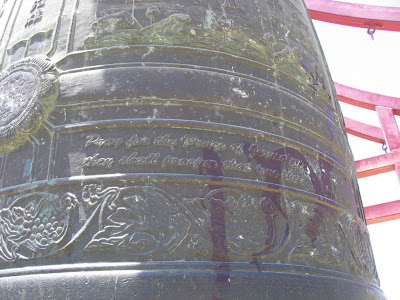 Click on the photo above to read the famous verse from Psalms: "Pray for the peace of Jerusalem. They shall prosper that love thee."
Click on the photo above to read the famous verse from Psalms: "Pray for the peace of Jerusalem. They shall prosper that love thee."
.
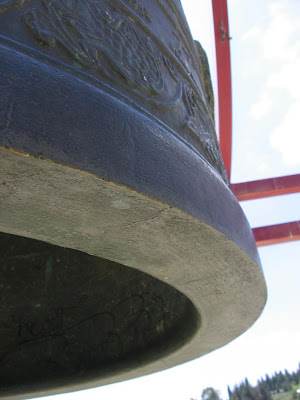 Striking the bonsho is associated with striking against evil. I wonder, then, why we have no wooden beam suspended next to this bell.
Striking the bonsho is associated with striking against evil. I wonder, then, why we have no wooden beam suspended next to this bell.
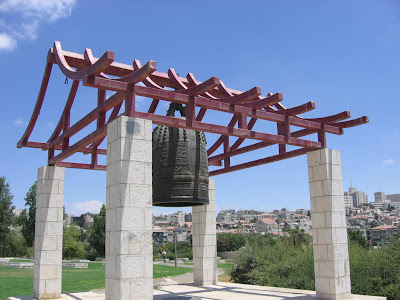 In the background is the old neighborhood of Nachlaot, beyond which is the shuk.
In the background is the old neighborhood of Nachlaot, beyond which is the shuk.
Yes, I came home hungry but filled with satisfaction that our Jewish leaders in Jerusalem were open to the lovely meaning of the bonsho and were gracious enough to accept the beautiful bell.
.
 Israel is in the middle of her dry season. It usually lasts from around April until October. Normally the sky is cloudless and not a drop of rain falls. The last rain even has its own name in Hebrew: malkosh. And yoreh is the first rain in the autumn. That's how important they are.
Israel is in the middle of her dry season. It usually lasts from around April until October. Normally the sky is cloudless and not a drop of rain falls. The last rain even has its own name in Hebrew: malkosh. And yoreh is the first rain in the autumn. That's how important they are.




















